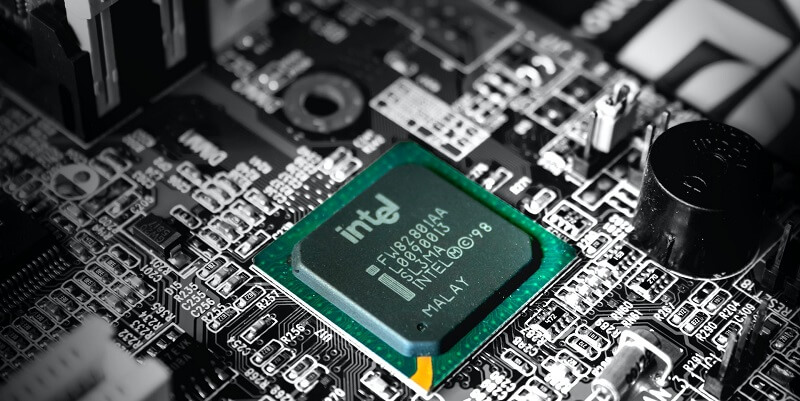In a remarkable turn of events, Intel, one of the giants in the semiconductor industry, has emerged from consecutive quarters of losses and returned to profitability for the second quarter of 2023. The company’s resurgence has been attributed to its groundbreaking advancements in CPU technology. Alongside this positive news, Intel revealed that its highly anticipated Intel 3 process, expected to launch in 2024, has already reached its yield and performance targets. This achievement not only showcases Intel’s ability to adapt and innovate but also paves the way for the release of their next-generation server chips, Granite Rapids, and Sierra Forest, without any delays.
Intel hits yield and performance targets for its 3rd generation chips, paving the way for upcoming server chips
The success of the Intel 3 process is a significant milestone for Intel, as it represents an evolution from Intel 4 and serves as the company’s second generation of extreme ultraviolet lithography (EUV) CPUs. With Intel 3 meeting its yield and performance targets ahead of schedule, Intel can confidently move forward with the development and release of their much-anticipated server chips. This achievement brings reassurance to customers and investors alike, as it demonstrates Intel’s commitment to delivering cutting-edge technology in a timely manner.
Intel is ramping up production and nearing completion, according to the Intel CEO
While highlighting the accomplishments of Intel 3, Intel’s CEO, Pat Gelsinger, revealed that the company’s Intel 4 CPUs are ramping up production and are essentially complete. Intel 4 is poised to further push the boundaries of performance, power efficiency, and functionality to meet the ever-increasing demands of the market. With the impending release of Intel 4, Intel is taking bold steps to solidify its position as a frontrunner in the semiconductor industry.
“Intel 3 achieves defect density and performance targets,” says Pat Gelsinger
During a recent press conference, Pat Gelsinger, CEO of Intel, praised the capabilities of Intel 3 by stating that the highly anticipated CPUs have not only met but surpassed the defect density (yield) and performance targets set by the company. This accomplishment further underscores Intel’s commitment to delivering reliable and high-performing products to its customers. With Intel 3 exceeding expectations, Intel’s customer base can look forward to enhanced performance and efficiency in their computing experiences.
Release plans for Sierra Forest, Intel’s efficiency-focused Xeon chip, have been announced
Sierra Forest, Intel’s first efficiency-focused Xeon chip, is set for release in the first half of 2024. With up to 144 E-cores, Sierra Forest promises to deliver exceptional performance while prioritizing energy efficiency. This chip will cater to the growing demand for sustainable computing solutions, making it an excellent choice for data centers and other power-constrained environments. Intel’s commitment to developing efficient server chips ensures that businesses can continue to meet their computing needs while reducing their environmental impact.
Granite Rapids, the sixth-generation scalable Xeon architecture, is set to be released soon
Following the release of Sierra Forest, Intel plans to launch Granite Rapids, their sixth-generation scalable Xeon architecture. With further optimizations and performance improvements, Granite Rapids aims to enhance the computing capabilities of data centers, cloud services, and other enterprise applications. Businesses can expect increased scalability, improved reliability, and better performance with this advanced Xeon architecture.
Consumer CPU plans: Intel 7 for Raptor Lake, Intel 20A for Alder Lake
Intel has charted a clear roadmap for its consumer CPUs. The upcoming Raptor Lake processors will be powered by Intel 7, a refined and optimized version of their existing technology. Intel 7 will provide consumers with improved performance, power efficiency, and advanced features to meet the demands of modern computing. Looking further ahead, Intel has plans to introduce Intel 20A with Arrow Lake, offering a leap into the Angstrom era. These upcoming CPUs will incorporate cutting-edge features such as RibbonFET transistors, PowerVia technology, and a tile-based design, promising unprecedented levels of performance and efficiency.
Introduction to Arrow Lake: Leap into the Angstrom era with RibbonFET transistors, PowerVia, and a tile-based design
Arrow Lake, Intel’s future CPU generation, is set to revolutionize the computing landscape. With RibbonFET transistors that enable improved switching speeds and reduced power consumption, Arrow Lake will deliver a significant performance boost. Intel’s innovative PowerVia technology will enhance power distribution efficiency and reduce resistance, resulting in better energy efficiency and thermal management. Additionally, the tile-based design of Arrow Lake CPUs will enable increased modularity and customization, allowing for enhanced performance in specific applications and workloads.
Intel’s return to profitability marks a turning point in the company’s journey, showcasing its resilience and ability to thrive in a competitive market. The success of the Intel 3 process and the forthcoming releases of Sierra Forest and Granite Rapids exemplify Intel’s commitment to pushing the boundaries of performance, efficiency, and innovation. With a clear roadmap for their consumer CPUs, including the Intel 7-powered Raptor Lake and the groundbreaking Intel 20A for Arrow Lake, Intel is poised to deliver exceptional computing experiences to consumers and businesses alike. As the semiconductor industry continues to evolve, Intel remains at the forefront, continuously raising the bar and setting new standards for advanced CPU technology.

